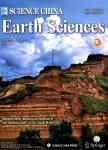Preliminary study on assessment of nutrient transport in the Taihu Basin based on SWAT modeling
Preliminary study on assessment of nutrient transport in the Taihu Basin based on SWAT modeling作者机构:Nanjing Institute of Geography & Limnology Chinese Academy of Sciences Nanjing China The Graduate School of the Chinese Academy of Sciences Beijing China Key Lab of Poyang Lake Ecological Environment and Resource Development Jiangxi Normal University Nanchang China
出 版 物:《Science China Earth Sciences》 (中国科学(地球科学英文版))
年 卷 期:2006年第49卷第Z1期
页 面:135-145页
核心收录:
学科分类:08[工学] 0708[理学-地球物理学] 0815[工学-水利工程] 0704[理学-天文学]
基 金:2002CB412300-1 Chinese Academy of Sciences,CAS
主 题:Taihu Basin, nutrients, catchment resource inputs, SWAT model, simulation.
摘 要:With the Taihu Basin as a study area, using the spatially distributed and mechanism-based SWAT model, preliminary simulations of nutrient transport in the Taihu Basin during the period of 1995~2002 has been carried out. The topography, soil, meteorology and land use with industrial point pollution discharge, the loss of agricultural fertilizers, urban sewerage, and livestock drainages were all considered in the boundary conditions of the simulations. The model was calibrated and validated against water quality monitoring data from 2001 to 2002. The results show that the annual total productions of nitrogen (TN) and phosphorus (TP) into Lake Taihu are 40000t and 2000t respectively. Nutrient from the Huxi Region is a major resource for Lake Taihu. The non-point source (surface source) pollution is the main form of catchment sources of nutrients into Lake Taihu,occupied TN 53% and TP 56% respectively. TN and TP nutrients from industrial point pollution discharge are 30% and 16%, and sewerage in both forms of point source and non-point source are TN 31% and TP 47%. Both the loss of agricultural fertilizers and livestock drainages from the catchment should be paid more attention as an important nutrient source. The results also show that SWAT is an effective model for the simulation of temporally and spatially nutrient changes and for the assessment of the trends in a catchment scale.



